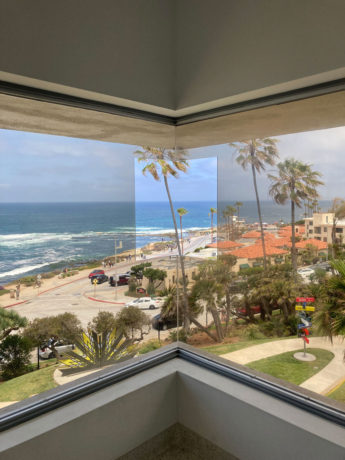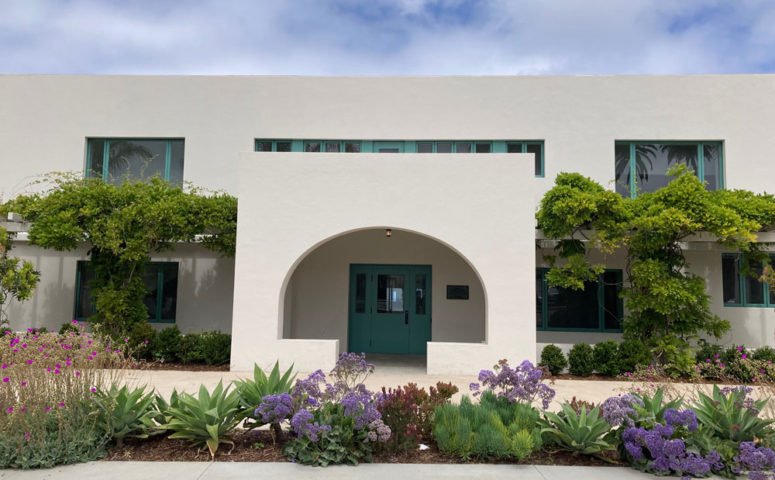La Jolla has some of the best architecture in the country and some of the worst. Louis Kahn’s Salk Institute commands a cliff like few others. Irving Gill, who was modern before modern, dots the town with his witty combination of vernacular and minimalism. Sadly, others didn’t follow. You can enjoy the posh environs of La Valencia Hotel or, down the street, a BBQ joint with a gum-chewing proprietor. On this trip, the highlight was the Museum of Contemporary Art San Diego.
The museum opened in 1941 in the former home of Ellen Browning Scripps, who had the foresight to hire Gill to design the building facing the ocean. Although the elevation is still evident, the experience of the house is not. In 1996, the museum strayed from the modernist roots and turned to postmodernists Robert Venturi and Denise Scott Brown for an addition that was meant to complement Gill, but doesn’t. This may be because a colonnade they designed was removed. The most recent renovation by Selldorf Architects added a lot of square footage and marked a return to modernism. The addition is subtle and makes for a comfortable entrance and bookshop. The rear elevation is still a collage. But the terraces are incredible. For a fine review read Mimi Zeiger’s piece in Metropolis.
For us, the treats were two artists who ended up in La Jolla. Niki de Saint Phalle in the 1960s reminds us that sometimes being an exhibitionist works. Several videos show Saint Phalle purring French, telling us why she shot up her artworks. An important step in ending the patriarchy.
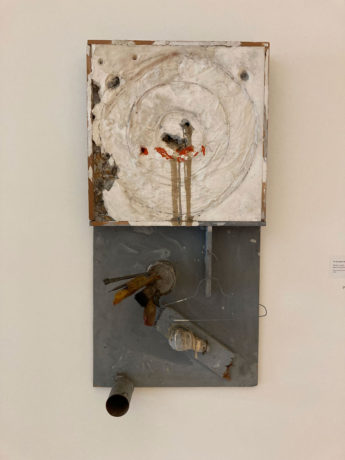
Her subsequent work depicted large women called Nanas. Sometimes these look like innocuous aunts and grandmas.
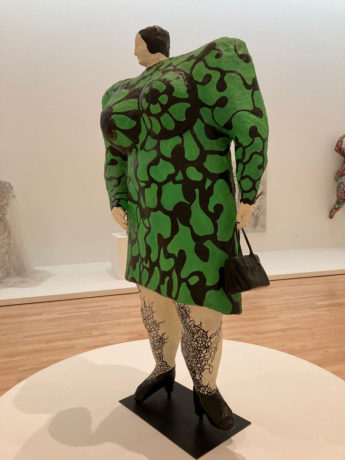
But one of her most famous pieces in this period, “Hon – en katedral,” from 1966, was remembered with a photocollage and maquette. It was a complete environment entered through a woman’s vagina. Temporary, of course. A more permanent sculpture garden of her work can be found 30 miles north in Escondido.
Another artist who made his home in La Jolla is Robert Irwin. There are several paintings that present his roots in abstract expressionism and his move to a kind of minimalism. Two stripe paintings facing each other show how beautifully he painted while challenging viewers’ perceptions. One of his famous disks floats on a wall without artificial light, only the daylight from a slender side window.
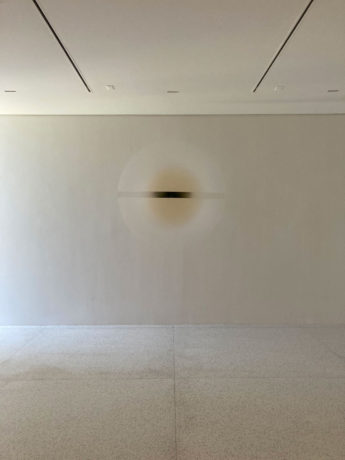
You might miss his triumph, a piece entitled “1° 2° 3° 4°,” if you weren’t looking. Three holes cut into three windows remind us to look again. Smell again. Feel again. The title refers to height, width, depth, and time. The first three can be fixed. The last cannot.
